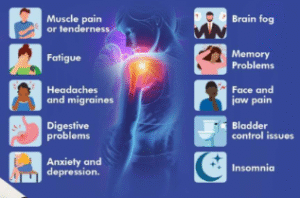Thriving Beyond the Pain: Can You Live Comfortably with fibromyalgia?
Can You Live Comfortably With Fibromyalgia?
Fibromyalgia is a chronic disorder marked by widespread musculoskeletal pain, fatigue, cognitive disturbances, and a host of related symptoms that often come and go without warning. For many who receive this diagnosis, the first question that arises is whether a comfortable and fulfilling life is still within reach. The answer is yes. While fibromyalgia can be deeply disruptive, living comfortably with it is not only possible but increasingly attainable with the right combination of strategies, support, and mindset.
This condition, though incurable, is manageable. It demands lifestyle adjustments and a proactive approach to health and wellness, but it does not have to define or confine your life. Many individuals with fibromyalgia live meaningful, joyful lives by learning how to adapt, advocate for themselves, and nurture their well-being holistically.
Understanding What Comfort Means With Fibromyalgia
Comfort for someone with fibromyalgia is not about the complete absence of symptoms. Rather, it involves minimizing flare–ups, reducing symptom severity, improving function, and maximizing quality of life. Comfort includes physical relief, emotional stability, mental clarity, and a sense of control over one’s daily experience.
Instead of aiming for perfection, the goal becomes establishing a baseline of stability from which you can engage in daily life, relationships, and even work with confidence and energy.
Developing a Personalized Pain Management Plan
Pain is often the most dominant and distressing symptom of fibromyalgia. Managing it effectively requires a personalized, multimodal approach that may include:
- Gentle stretching and low-impact exercises like swimming or walking
- Over-the-counter medications or prescription treatments tailored to your needs
- Heat therapy such as warm baths or heating pads to soothe muscles
- Acupuncture, massage therapy, or chiropractic care as complementary options
Learning your body’s pain patterns and identifying triggers can help anticipate flare–ups and address them proactively. Comfort often begins with consistency and balance in managing physical symptoms.
The Role of Sleep and Rest in Daily Comfort
Sleep disruption is common in fibromyalgia, and without restorative sleep, symptoms can spiral. Establishing good sleep hygiene is essential for living comfortably. This includes:
- Maintaining a consistent bedtime and wake time
- Creating a calm, dark, and cool sleep environment
- Avoiding stimulants like caffeine before bed
- Incorporating a wind-down routine such as reading or meditating
Rest throughout the day is just as vital. Strategic breaks and downtime help the nervous system regulate and prevent overstimulation, which often leads to flare–ups.
Nutrition as a Pillar of Symptom Control
While there is no specific fibromyalgia diet, certain dietary choices can significantly influence symptom severity. Anti-inflammatory foods like leafy greens, berries, fatty fish, and whole grains can help reduce joint and muscle inflammation.
Avoiding processed foods, excessive sugar, caffeine, and artificial additives is equally important. Many individuals also benefit from:
- Staying well hydrated
- Eating smaller, more frequent meals to stabilize blood sugar
- Identifying any food sensitivities that may exacerbate symptoms
A balanced, nutrient-dense diet supports immune function, energy production, and overall health, all of which contribute to greater daily comfort.
Physical Activity and Movement for Flexibility and Energy
Exercise may seem counterintuitive when dealing with chronic pain, but it remains one of the most effective tools for managing fibromyalgia. The key lies in starting slowly and choosing gentle, low-impact movements that enhance flexibility, circulation, and endorphin production.
Recommended activities include:
- Yoga or Tai Chi for stress relief and mobility
- Water aerobics or swimming for joint-friendly exercise
- Walking or cycling in short sessions
- Stretching routines to prevent stiffness
Staying active improves both physical and emotional well-being and can reduce the intensity and frequency of flare–ups over time.
Mental Health Support for Emotional Comfort
Fibromyalgia takes a toll not only on the body but also on the mind. Anxiety, depression, and mood swings are common and can make physical symptoms worse. To live comfortably, emotional well-being must be a priority.
Strategies include:
- Cognitive-behavioral therapy (CBT) to address negative thought patterns
- Support groups that foster a sense of community and shared experience
- Mindfulness practices such as meditation or deep breathing
- Journaling to express emotions and track progress
Building emotional resilience helps you manage stress better, which in turn calms the nervous system and reduces pain perception.
Pacing and Energy Management
Living comfortably with fibromyalgia means accepting that energy is a limited resource and must be managed wisely. This concept, often referred to as the “spoon theory,” encourages people to budget their energy throughout the day.
Pacing strategies include:
- Breaking tasks into smaller, manageable parts
- Prioritizing essential activities
- Scheduling downtime between engagements
- Learning to say no without guilt
This mindful approach allows for more consistent functioning and reduces the chance of crashes following periods of overexertion.
Creating a Supportive Environment
Your surroundings play a huge role in how comfortably you live with fibromyalgia. Support from family, friends, and even coworkers can lighten your emotional and physical load. Open communication about your condition helps others understand your limitations and how they can assist.
Making your home comfortable might include:
- Ergonomic furniture or tools to reduce strain
- A calm, quiet space for rest and relaxation
- Easy-to-prepare meals and accessible storage
- Lighting and noise control to avoid sensory overload
A nurturing environment, both physically and socially, enhances your ability to cope with daily challenges.
Work-Life Balance and Vocational Adjustments
For many, fibromyalgia affects their ability to work, but it does not always mean giving up a career. Modifications in the workplace, flexible schedules, remote work options, or part-time roles can enable you to continue working without sacrificing your health.
Living comfortably might also involve:
- Changing careers to one with less physical demand
- Advocating for disability accommodations
- Setting boundaries to avoid burnout
- Finding purpose outside of traditional employment
Work-life balance is crucial for sustaining long-term health and happiness.
Setting Realistic Goals and Celebrating Progress
Living comfortably with fibromyalgia is a journey, not a destination. Progress may be slow, but each small victory matters. Setting realistic goals, whether it’s going for a walk, cooking a healthy meal, or attending a social event, can build confidence and improve your sense of well-being.
Tracking symptoms, recognizing patterns, and celebrating even the smallest milestones can keep motivation high and provide a sense of control.
FAQs About Living Comfortably With Fibromyalgia
1. Is it possible to live a normal life with fibromyalgia?
While life may change, many people adapt and find new ways to live fully. With proper management, comfort and purpose are entirely possible.
2. Can fibromyalgia symptoms improve over time?
Yes, some individuals experience periods of reduced symptoms. Through consistent self-care, many find that flares decrease in frequency and intensity.
3. Do natural remedies help with fibromyalgia comfort?
Yes, therapies such as massage, acupuncture, and herbal supplements can offer symptom relief when used safely alongside conventional treatments.
4. Can I still travel or exercise with fibromyalgia?
Absolutely. With planning, pacing, and adjustments, you can still enjoy travel and physical activity in ways that suit your energy levels.
5. How do I stay positive despite the challenges?
Practicing gratitude, focusing on what you can do, and connecting with others who understand your journey can help maintain a positive outlook.
6. Are there long-term risks if fibromyalgia is not managed well?
Yes, unmanaged fibromyalgia can lead to worsening symptoms, increased disability, and declining mental health. Early and consistent management is key.
Conclusion
Can you live comfortably with fibromyalgia? The answer lies in redefining what comfort means and learning how to prioritize health on every level. Through self-awareness, strategic lifestyle changes, and a strong support system, it is not only possible to live with fibromyalgia—it is possible to thrive. Comfort does not mean a symptom-free existence. It means building a life of balance, purpose, and peace, even in the face of chronic challenges.



